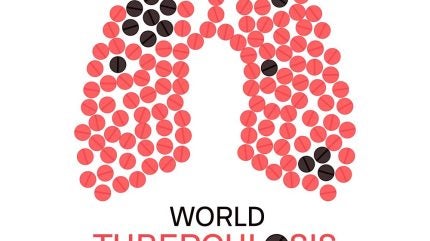
Tuberculosis or TB is the leading cause of death in people with HIV. Moreover, people living with HIV are at a 14–18 times higher risk of developing active TB compared to those without HIV infection.
HIV-TB coinfections require dedicated efforts to end preventable deaths by ensuring early access to TB treatment, life-saving antiretroviral therapy (ART) and tuberculosis preventive treatment. But progress remains slow. “We clearly need shorter, safer, less expensive and effective regimens to treat TB and drug-resistant (DR-TB),” Dr. Matteo Zignol, Unit Head, Prevention, Care & Innovation at WHO Global TB Programme, tells Pharmaceutical Technology.
As the World TB day is observed on 24 March, research for treating not just TB but also HIV-TB coinfections remains key.
Today, TB screening will likely take place at the time of an HIV diagnosis, and doctors are well-versed in looking for coinfections. However, gaining a TB diagnosis can be complex, costly, and difficult to access, while designing a treatment routine can be difficult due to the high pill burden associated with these conditions.
HIV and TB: “A lethal combination”
“HIV and TB form a lethal combination, each speeding the other’s progress,” as per the World Health Organization (WHO). If unable to access sufficient treatment, nearly all HIV-positive people with TB will die.
See Also:
Due to their weakened immune system, people with HIV are at an increased risk of developing TB. For people with a latent TB infection, HIV infection is the most significant known risk factor for progressing to TB disease, the Centers for Disease Control and Prevention (CDC) reported. In 2022, 167,000 died from HIV-associated TB, and only 54% of TB patients known to be living with HIV were on ART.
How well do you really know your competitors?
Access the most comprehensive Company Profiles on the market, powered by GlobalData. Save hours of research. Gain competitive edge.

Thank you!
Your download email will arrive shortly
Not ready to buy yet? Download a free sample
We are confident about the unique quality of our Company Profiles. However, we want you to make the most beneficial decision for your business, so we offer a free sample that you can download by submitting the below form
By GlobalDataRecorded HIV-TB coinfections have been on the rise, the WHO reported, reaching 80% in 2022, up 4% from 76% in 2021. The WHO African Region has the highest burden of HIV-associated TB. As of August 2023, the estimated number of TB-related deaths among people living with HIV was 33,000 in South Africa, 13,000 in Nigeria and 11,000 in Kenya. A high number of deaths was also reported in India, with 11,000 deaths from HIV-TB coinfections.
However, a better understanding of HIV-TB coinfections is still needed. A group of researchers from leading South African research institutes published their efforts to begin a scoping review to identify social determinants of HIV/TB coinfections in Sub-Saharan Africa to identify any research gaps to inform policymakers, researchers, and healthcare professionals.
A growing body of research
In June 2023, the WHO launched a new online platform to explore progress in the new TB drug and vaccine development and operational research projects, which includes studies to assess how to optimise treatment administration in people with HIV. Scientists are exploring new compounds to fight TB and new combinations of existing drugs that may shorten preventive treatment and treatment duration.
Efforts by some pharmaceutical companies are underway to look at new molecules to enter the TB space. But not all projects involve a new entity entirely. The TB community at large aims to also have new ways to administer treatment, such as patches or the potential for only one injection, resulting in “a much shorter approach to both preventive but also treatment of the disease,” Dr. Lucica Ditiu, Executive Director of the Stop TB Partnership, told Pharmaceutical Technology Focus.
However, Ditiu says the TB landscape is not a very strong one. “The governments are paying for the treatments provided for free for TB. “
In 2012, the US Food and Drug Administration (FDA) approved bedaquiline fumarate as part of combination therapy in adults with pulmonary multidrug-resistant TB when an effective treatment regimen cannot be provided. In a 2020 study, researchers described bedaquiline as a potent new therapy for drug-resistant -TB that leads to improved survival rates in HIV patients.
New drug research is ongoing to evaluate the pharmacokinetics, safety and tolerability of bedaquiline in combination with individualised rifampin-resistant (RR) TB therapy in infants, children and adolescents with RR-TB disease living with or without HIV. New regimen research is also exploring adjunctive corticosteroids for TB meningitis in HIV-infected adults.
Researchers are also conducting efficacy and safety tests to analyse different combinations of rifapentine and isoniazid as TB preventive treatment (TPT) in people with HIV. Studies are also assessing the safety and tolerability of metformin in combination with standard antimicrobial treatment of pulmonary TB in people with HIV-TB coinfections.
Additionally, scientists are also looking at safety, tolerability, and PK, and potential interactions between GSK’s Tivicay (dolutegravir) and rifapentine (RPT) during pregnancy in people with HIV.
“The pharmaceutical landscape for HIV is much more robust, much stronger than for TB,” said Ditiu. People can access very good treatment, medication and combined medication.
Despite this research, there is a limited number of companies in the TB space, which is a key challenge in eradicating the disease. “TB is a disease that happens in countries with limited resources, high burden of diseases and TB, and therefore the return on investment and the profits that very often the pharmaceutical companies are looking at, are not coming, so it’s not a very attractive market,” says Ditiu.



